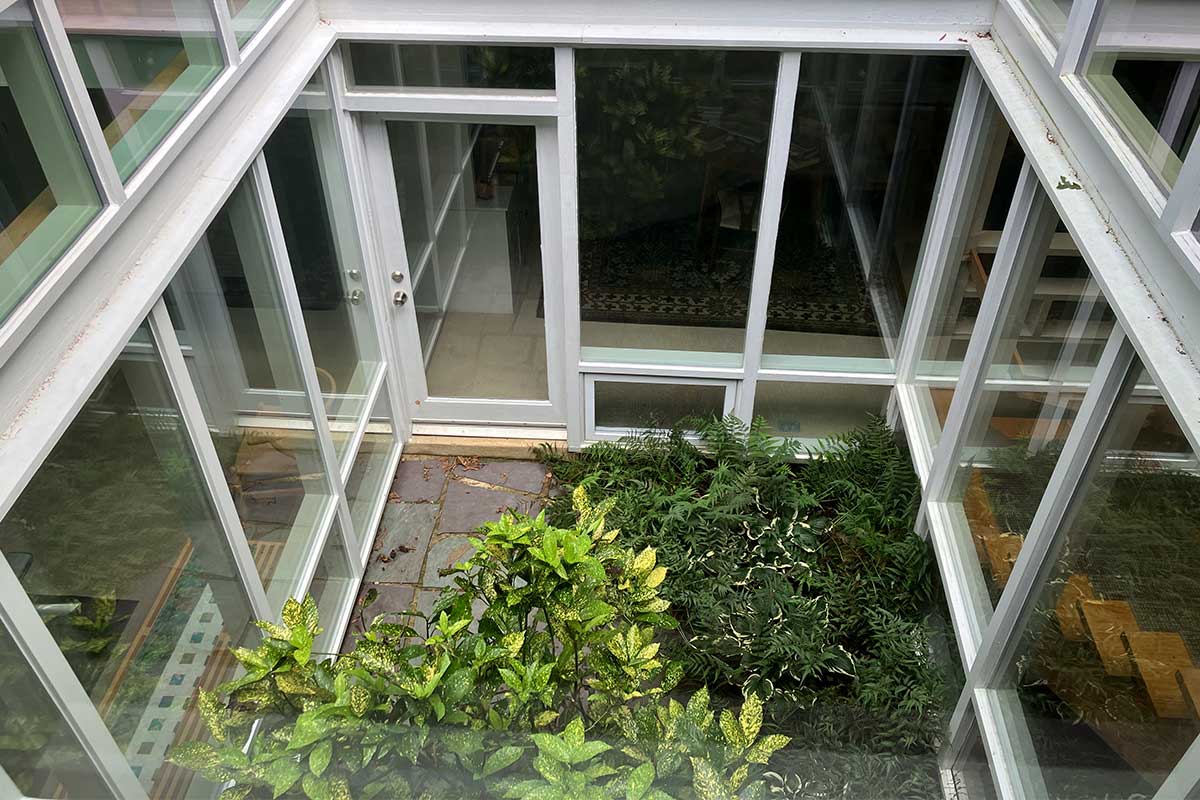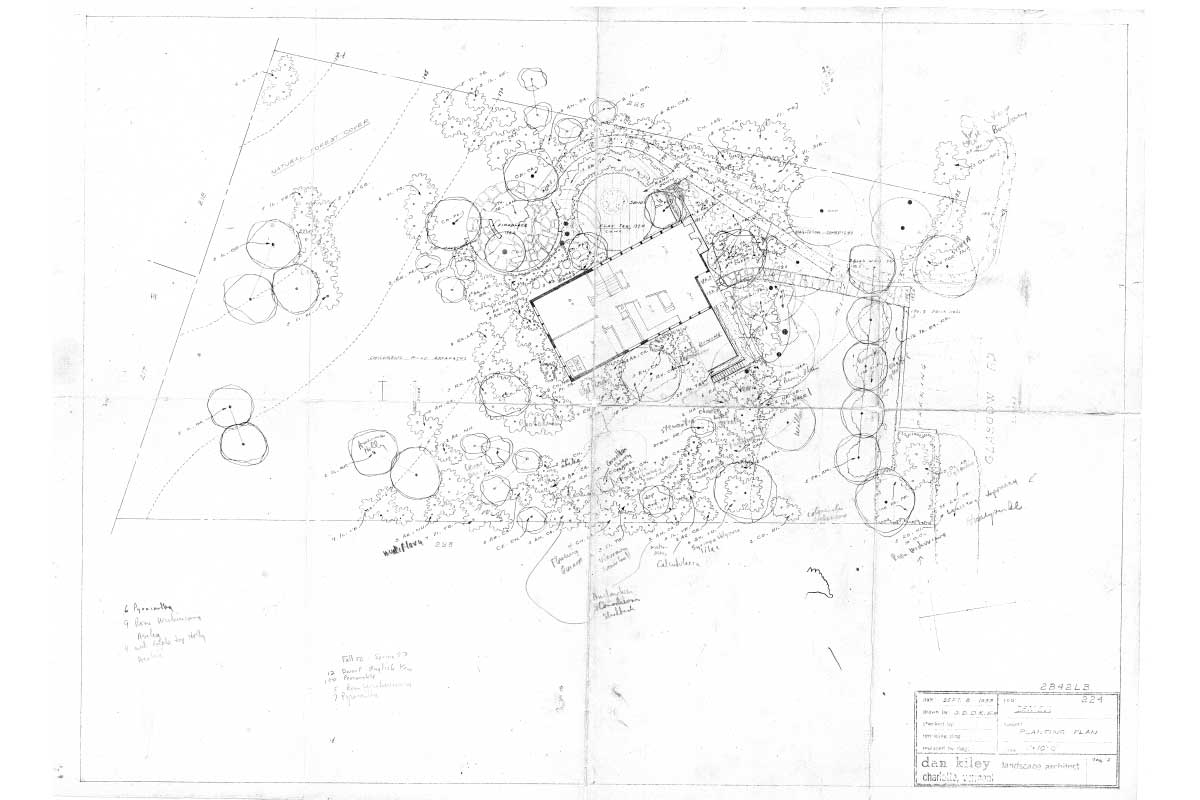The idea of having a garden inside the home is appealing to many of us. There are wide-ranging fantasies one might entertain about growing one’s own vegetables right in one’s own kitchen — or at least next to it — while that person should be WFH-ing all day.
And while all those midcentury modern floor plans make the interior atrium look like the perfect solution to outdoor/indoor life, what does one do about the dirt? Is there dirt? And if there’s dirt, then what does one do about cats? As with all things in life, it’s better to ask someone who knows, rather than just going for it without giving the outcome a thought.
Photo courtesy Stephen Brookes, Hollin Hills
Barbara Wade, a resident of Hollin Hills in Alexandria, has been living in a home with an interior atrium for 30 years, and explains the upside and downsides to having a centrally located, glassed-in box right in the center of your home.
Wade’s atrium is in the middle of the house, which is a square shape. It’s two stories of glass on all four sides that’s open to the top, and is about 9 feet by 12 feet, with a door to get to the interior.

“It’s not the original design,” says Wade of the present layout of her atrium. “When the house was first designed, it was a U-shape on the bottom. To get into the house, you’d walk under the house, into the atrium, which was totally open on one side.”
When the previous owners renovated the house, they enclosed the atrium within the house itself, moving the main entrance elsewhere, and turning the former entryway into an entrance to the fully enclosed atrium, which is the present configuration of the home.
 Photo courtesy Hollin HIlls
Photo courtesy Hollin HIlls
When it comes to what to put into your atrium, Wade says, “Most of the atrium is dirt, with a [paved] landing area off the door that’s [about 2 feet by 3 feet]. We have a large Aucuba tree and a Skimmia shrub. We have had some problems with getting things to grow out there, initially.”
Wade recommends planting shade-loving plants that do well in hot temperatures — like Shea plants, ferns, or the Aucuba tree, which has done well in her atrium over the years.
But if you ask Barbara Ward, Design Review Committee director for Hollin Hills, she says that atriums are, for lack of a better phrase, a pain in the neck. “There’s lots of moisture problems with atriums — especially when combined with the soil’s own moisture issues around the [Hollin Hills neighborhood].”
While Ward does not have an atrium of her own, she mentioned that the moisture issue brought about by indoor atriums might lead to secondary maintenance issues within the structure of the home as well. Think leaks, water damage, water stains, mold, or mildew.
Wade did not report these issues with her atrium, although she said that she does have to hire maintenance workers to clean it on a semi-annual basis.
“There’s a bunch of leaves on the patio area,” says Wade. “It’s just regular outdoor maintenance. In the fall, I sweep up leaves. In the spring, it’s cleaning out the dead leaves. But it’s also pretty maintenance-free because of the plants you keep in there. You have to prune the tree, but that’s pretty much it.”
Plants aside, Wade says that the house gets hotter earlier in the year. “It’s definitely hot — I have to turn on the air conditioner in March or April — it gets so hot in here. You wouldn’t want to be there on a summer day.”
For more stories like this, subscribe to our Home newsletter.
[ad_2]
Originally Appeared Here